Skip to content
Epiphytic: Attached to plants.Epilithic: Attached to rock surfaces.Epipelic: Attached to mud (sediments, clays, or silt).Epipsammic: Attached to grains in sandy sediments.
Ellipsoidal (oval shaped)SphericalTriangular RectangularCylindricalSigmoidalFusiform (similar to a pointed oval)Complex (doesn’t conform to a singular shape)
How the microbe obtains energy for living and growing.How the microbe obtain reducing equivalents used in energy conservation and biosynthetic reactions.How the microbe obtains carbon for synthesizing cell mass.
Fresh: Defined as having a low salt concentration usually less than 1%. It includes ponds, lakes, streams, rivers and wetlands.Marine: Comprises systems of open-ocean and unprotected coastal habitats, characterized by exposure to wave action, tidal fluctuation, and ocean currents as well as systems that largely resemble these. Water in the ocean biome is generally within the salinity range of seawater 30 to 38 ppt.Mangrove: Composed by Mangrove plants mangroves are able to withstand high levels of salinity as well as regions of anoxia and frequent tidal inundation. This biome often occurs near tropical and sub-tropical estuaries in areas protected from high energy wave action.Sediment: Is a naturally occurring material that is broken down by processes of weathering and erosion from land to the water by the action of wind, water, or ice.Brackish: Brackish water is water having more salinity than freshwater, but not as much as seawater. It may result from mixing seawater with fresh water together, as in estuaries, or it may occur in brackish fossil aquifers.Estuaries: Estuaries and their surrounding wetlands are bodies of water usually found where rivers meet the sea.Waste waters: Domestic wastewater or sewage produced by a community of people.
Tundra: Includes only low-growing vegetation such as dwarf shrubs, sedges and grasses, mosses, and lichens. Tundra biomes rarely have monthly average temperatures above 10 degrees Celsius and have low precipitation ratios. Tundra is also found at the tops of very high mountains elsewhere in the world.Forest: Includes densely packed vegetation which strongly limits light penetration to the forest floor. Can be classified on Temperate, Boreal and Tropical forest.Cropland: Is an anthropogenic terrestrial biome which is primarily used for agricultural activity and which contains no village or larger human settlements.Grassland: Includes large, rolling terrains of grasses, flowers and herbs. The annual precipitation is great enough to support grasses, and in some areas a few trees.Beach sand: Loose granular material blanketing the beaches, riverbeds, and other bodies of water. Includes sand close to coastal settings.Sediment: Is a naturally occurring material that is broken down by processes of weathering and erosion from land to the water by the action of wind, water, or ice.
Animal: Any vertebrate or invertebrate macro-organism.Coral: Marine invertebrate typically living in compact colonies of many identical individual “polyps”.Sponges: Multicellular organisms that have bodies full of pores and channels allowing water to circulate through them. Sponges are worldwide in their distribution, living in a wide range of ocean habitats, from the polar regions to the tropicsPlant: Multicellular, predominantly photosynthetic eukaryotes of the kingdom Plantae.Fungi: macro-organisms that includes mushrooms.Human: Human being of any race. If human host, you need specify the specific part of the body where the microbe is found. Some microbes might be specific to certain parts of the body while some others are generalists, meaning they might be found in multiple parts of the human body. Body sites include: Blood, gastrointestinal tract, skin, oral cavity, urogenital tract, nasal passage.
Space: Organisms found out of the Earth’s atmosphere in man-built facilities such as the International Space Station.Depths: deep sea is the lowest layer in the ocean. Little or no light penetrates this part of the ocean, and most of the organisms that live there rely for subsistence on falling organic matter produced in the photic zone.Desert: Are the driest of all the biomes. It loses more liquid water by evapotranspiration than is supplied by precipitation.Polar: It is the coldest, windiest, and driest biomes on Earth, located on the South and North pole.Volcanic: Surroundings of a volcano. It can be a volcano on the surface or deep on the sea.Geothermal/Hot Springs: A hot spring, hydrothermal spring, or geothermal spring is a spring produced by the emergence of geothermally heated groundwater that rises from the Earth's crust.
 Diatoms
Diatoms
What are Diatoms?
Diatoms are a major component of phytoplankton community. They are unicellular, eukaryotic organisms characterized by their siliceous cell walls. Diatoms are found in the oceans, waterways and soils. They generate about 20 to 50% of the oxygen produced on the planet each year. Diatoms also provide the basis of the food chain for both marine and freshwater micro-organisms and animal larvae.
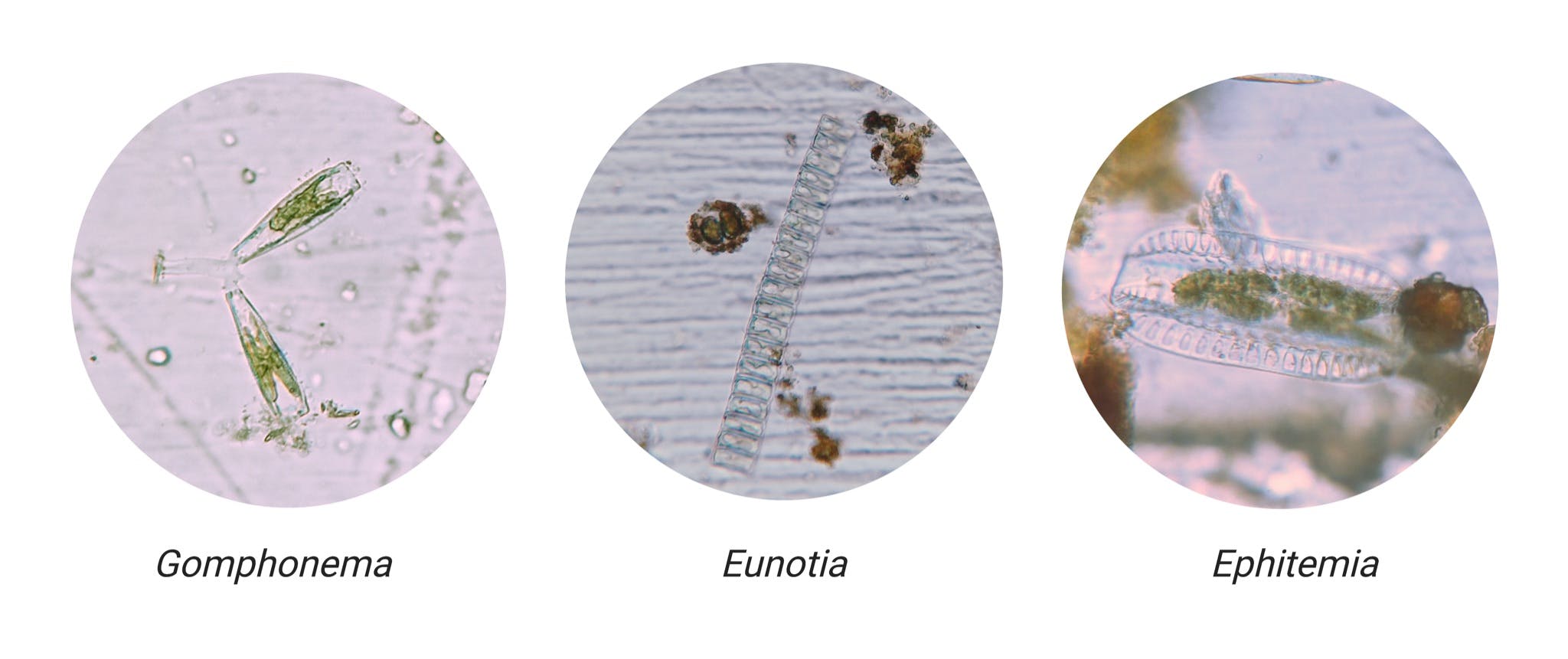

Some species of diatoms. Credits to Jorge L. Mejia BSc
More Info:
Type of Growth: Diatoms are unicellular microbes that can be found growing as solitary or multiple cells linked together as a colony(Non-Solitary).


Type of Growth. Solitary (non-colonial) and Colonial growth
Lifestyle: Diatoms with aquatic habitats, whether solitary or colonial, can either be free living, such as those that simply float in water, not attached to any sort of substratum. These species would be classified as planktonic. They are also known as pelagic diatoms.
Other diatoms are attached to a substratum of some sort such as plants or rocks, found on the bottom, or in the bottom sediments, of a sea, lake, or other body of water. These are known as benthic diatoms. Depending on the type of substratum, each diatom can be classified differently:


Lifestyle of Diatoms: Planktonic and Benthic.
Symmetry: Diatoms are divided into two major groups based on the structure and shape of the valves. These are the Centrics (Order: Biddulphiales) and the Pennates (Order: Bacillariales). Centric diatoms are radially symmetrical while pennate diatoms are bilaterally symmetrical.
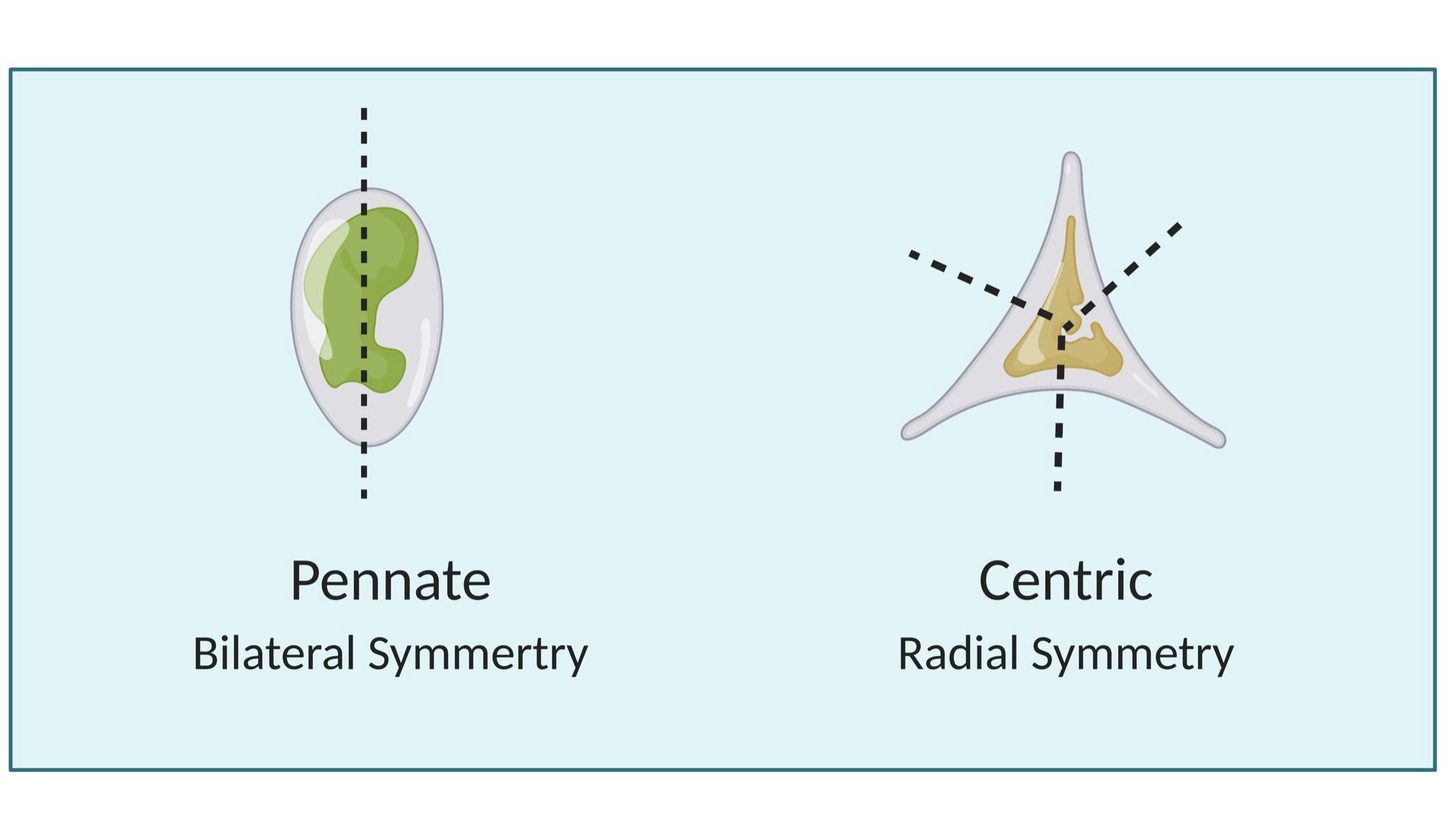

Symmetry of Diatoms: Centric and Pennate
Morphology: The diatoms are one of the largest and ecologically most significant groups of organisms on Earth. They are also one of the easiest to recognize, because of their unique cell structure, silicified cell wall and life cycle. Viewed under microscopes, diatoms show a huge variety of shapes with many interesting and beautiful patterns. Their shapes and structure are usually highly regular and symmetrical, and these features are used to identify and classify them.


Morphological Categorization of Diatoms
Secondary Structures: Diatoms have a cell wall composed of silica called a frustule. This is characteristic of all diatoms. However, some diatoms might also have secondary structures on their cell wall such as Spines (fibrils or filaments) and Bristles.
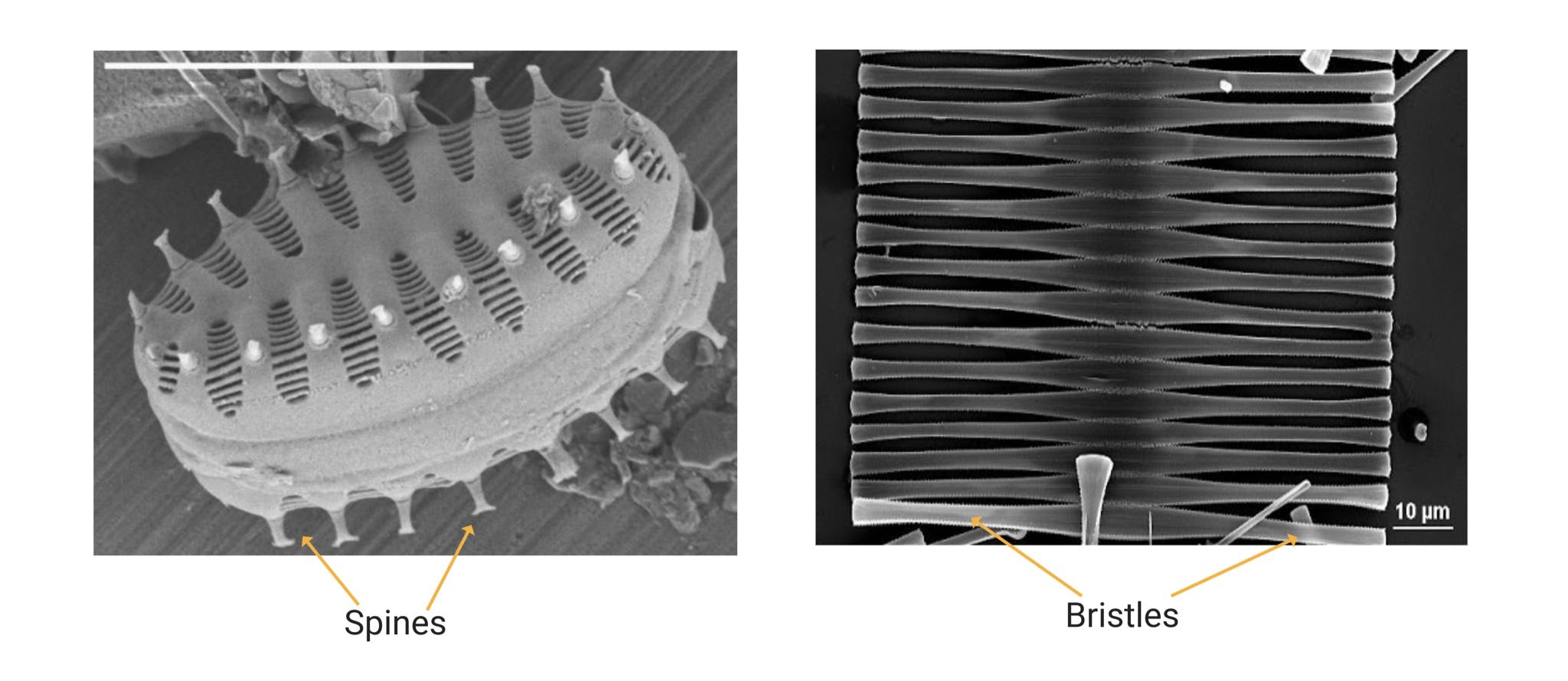

Biofilm: Biofilm is a consortium of microorganisms that stick to each other on a surface. Biofilms may form on living or non-living surfaces and can be prevalent in natural, industrial, and hospital settings. Many diatom species produce biofilm in order to attach to surfaces. Biofilm aids benthic diatoms in their attachment to their substratum.
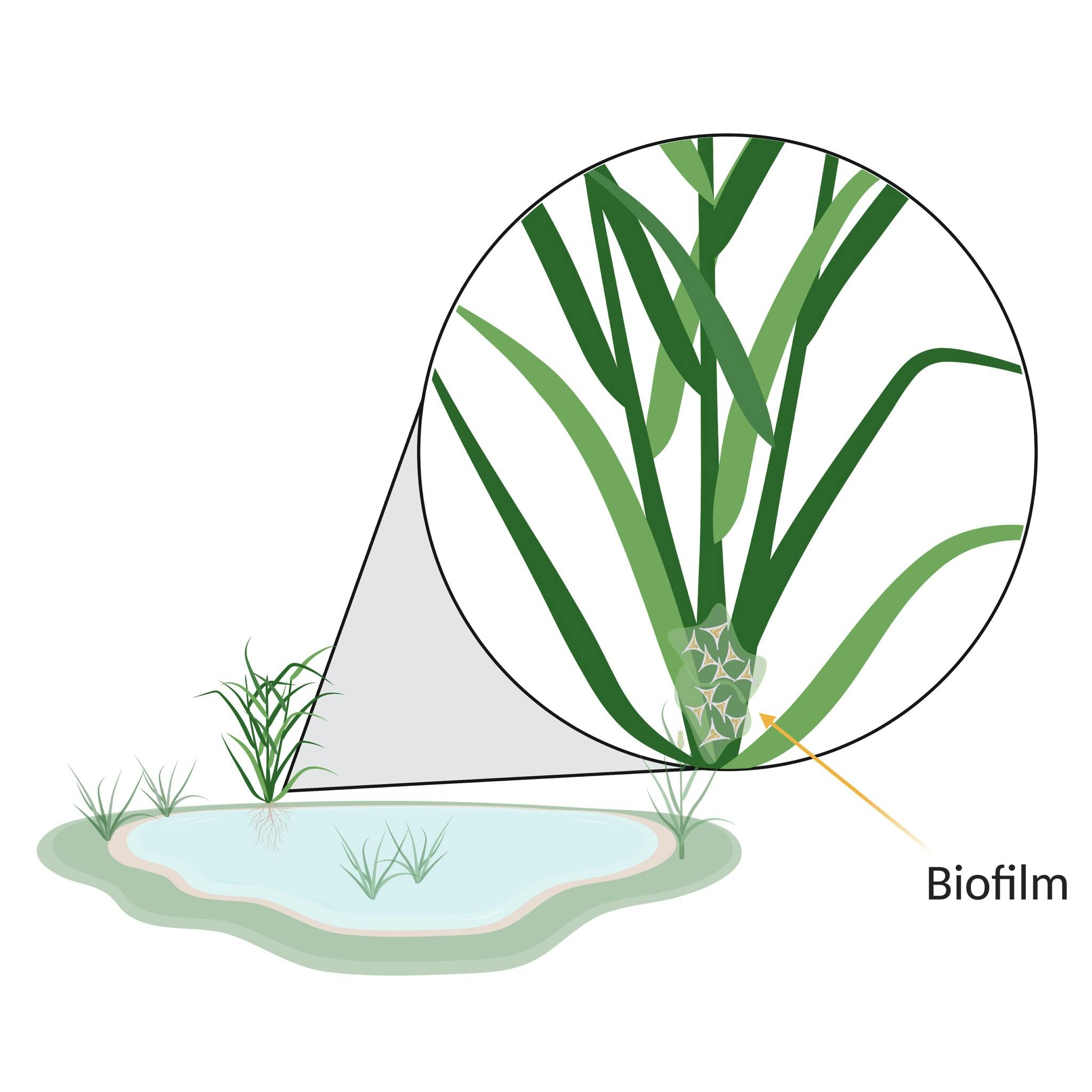

Biofilm forming diatom on plants
More info:
Diagnosis of the Diatom Community upon Biofilm Development on Stainless Steels in Natural Freshwater
UV Resistance: Diatoms are found in many extreme environments. Many diatoms have evolved over time and in the process gained UV resistance as a protective mechanism. Even in presence of low concentrations of UV-absorbing compounds, several diatoms exhibit significant UVR tolerance. There are three different types of UV radiation that a diatom can potentially have resistance against: UVA, UVB, and UVC.
More info:
Antagonism Activity: Some diatoms have antagonism activity, which means the ability to treat the effects of pathogenic microbes. For example, diatoms that can treat the activity of a pathogenic fungus have antifungal activity. Those that can treat the activity of pathogenic bacteria and viruses, display antibacterial and antiviral activity, respectively.
More info:
Locomotion: Some diatoms are non-motile, meaning they have no mechanism that allows them to control their motion, while other diatoms are motile or mobil, through a structure such as a raphe. This allows them to move across surfaces.
Pigmentation: Diatoms produce a wide array of pigments. These pigments not only give them their unique colors, but have various functions such as light absorption, aiding photosynthesis, photo-protective function, and more.
o Chlorophyll a
o Chlorophyll c
o Beta-carotene
o Fucoxanthin
o Diatoxanthin
o Diadinoxanthin
o Violaxanthin
o Antheraxanthin
o Zeaxanthin
o Xanthophylls
Symbiosis: A symbiotic relationship can be beneficial to both organisms that are interacting with each other. Diatoms can have a symbiotic relationship with bacteria, plants or animals.
More info:
Toxin production
Some diatoms produce toxins that can cause diseases such as amnesic shellfish poisoning (caused by the Pseudo-nitzschia that can produce neurotoxin domoic acid).
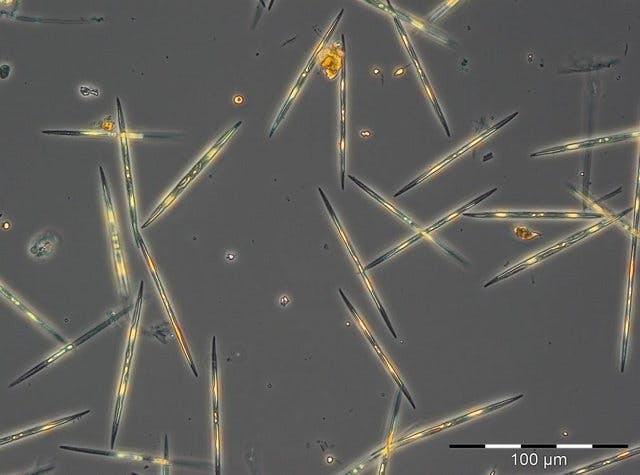

Extremophile: Microbes with optimal growth in environmental conditions considered extreme in comparison to the environmental conditions that are comfortable to humans such as low/high temperature, acidity, alkalinity, or chemical concentration. There are different types and degrees of extremophiles. They are not exclusive, meaning that a microbe can be for example an acidophile and thermophile.
There can be microbes that can be more extreme than others within the same extremophile type. For example: There could be slight halophiles that grow on 0.3 to 0.8 M, 1.7 to 4.8 % NaCl, moderate halophiles that grow on 0.8 to 3.4 M, 4.7 to 20 % NaCl and extreme halophiles that grow on 3.4 to 5.1 M, 20 to 30 % NaCl.
Some microbes might tolerate extreme conditions. However they do not do well under these conditions and their optimal conditions are within normal parameters (temperature, salinity, etc). Tolerant microbes are not considered extremophiles.


Table of different types of extremophiles Microalgae and Diatoms
Metabolism: Is the means by which the microbe obtains the energy and nutrients needed to live and reproduce. All microbial metabolisms can be arranged according to three principles:
Many microbes might use a different metabolism depending on their surroundings and food availability.


Microbial metabolisms
More info:
Microbiome: Although diatoms locations can vary, they are usually closely associated to a water sources. They can be found in or near bodies of water bodies or in sediment inside or near water.
Water biomes can be classified on:
Soil Biomes can be classified on:
Host Biomes can be classified on:
Extreme biomes can be classified on:
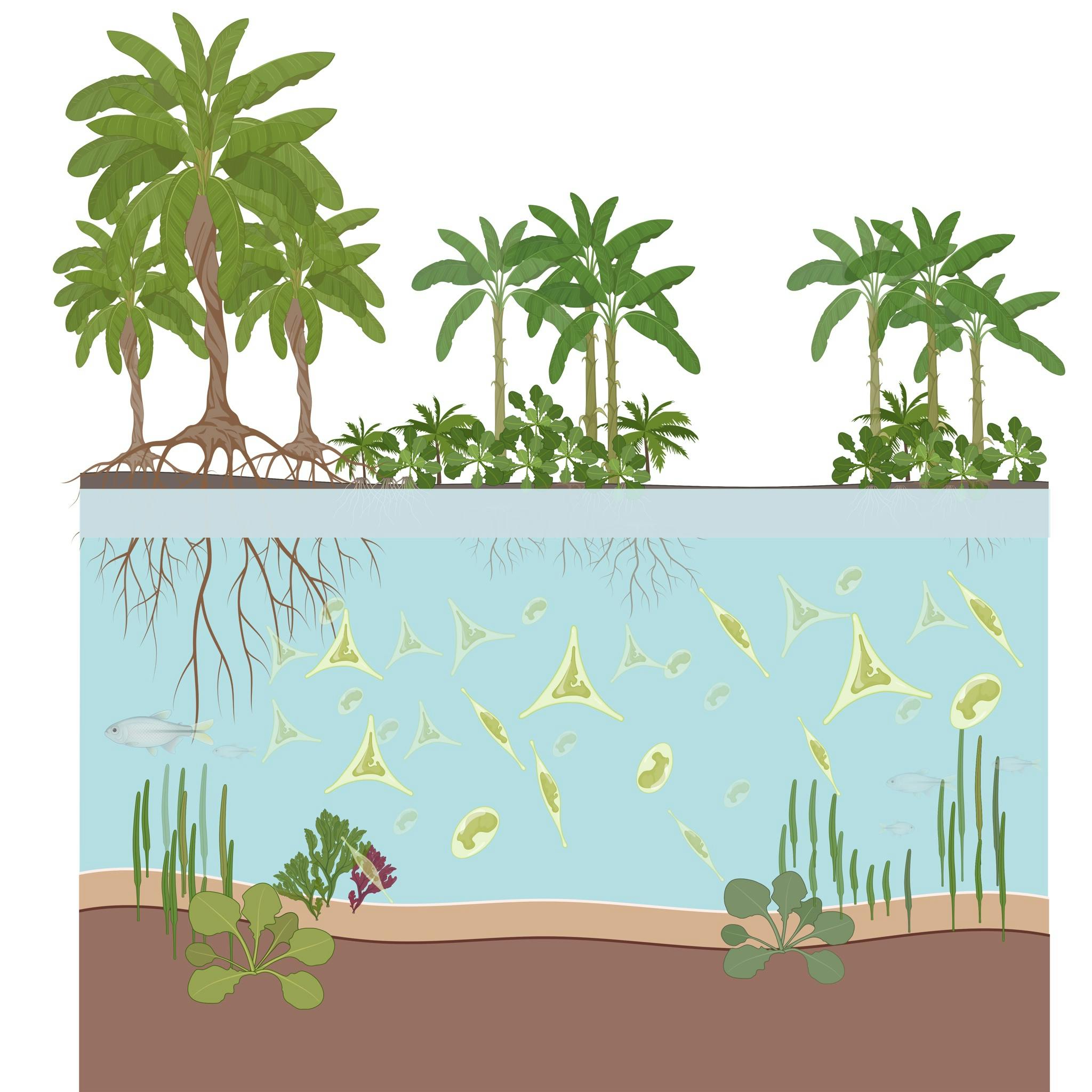

Representation of Diatoms in a Mangrove microbiome
Want to print your doc?
This is not the way.
This is not the way.

Try clicking the ··· in the right corner or using a keyboard shortcut (
CtrlP
) instead.